Customer communication is one of the key factors in what makes one online business more successful than another. Intercom is one of the most famous and useful customer support systems that you could currently find on the internet. But it’s very pricey, so here is a rundown of cheaper Intercom alternatives.
Intercom is a top-notch software with all sorts of customer communication and sales features: it makes communication with customers easy, it shows you who is using your site or your product, it uses targeted content, and behavior-driven messages to boost sales and conversions.
But, there’s a (pretty serious) downside. Intercom is pretty expensive.
Its pricing system is actually one of its biggest flaws. Users characterize it as weird, unpredictable, and unnecessarily high, and not all companies and small businesses can handle the expenses.
That’s why today, I want to show you the best Intercom alternatives on the market right now, focusing on cheaper Intercom alternatives that companies with a limited budget can also afford. Let’s take a look at what the best competitors are!
Top 3 Intercom Competitors:
- GoSquared ⇣ (best overall) -. It’s an overall great platform for customer communication, marketing and sales, with a lot of satisfied users across the globe.
- HelpCrunch ⇣ (runner-up) – it has all the basic things your business might need, it’s super user-friendly, and it’s very affordable – what’s not to like?
- Crisp ⇣ (most affordable + great for startups with limited budget) – includes a free option, which is great for a small business who’s just starting out with customer support and needs a simple, affordable solution.
TL;DR Nowadays the market for customer communications and marketing has grown quite a bit. Intercom is among the giants of the niche, but it’s expensive and very comprehensive – sometimes you just don’t need all those functionalities which come with a price.
So it’s only natural that we need help in choosing an alternative. I would say that the closest to an overall best solution is definitely HelpCrunch and GoSquared – both are user-friendly and have a lot of options your business can benefit from. GoSquared is a tad more expensive, so if you want a cheaper solution go with HelpCrunch.
And if you want an even cheaper solution, I’d recommend Crisp, which even offers a free option in their pricing plans. And then if you really want to take advantage of the ticketing system, I definitely recommend Zendesk. Last but not least is Drift, which is great if you really want to focus on customer service + company growth.
What are the Best Intercom Alternatives in 2025?
1. GoSquared
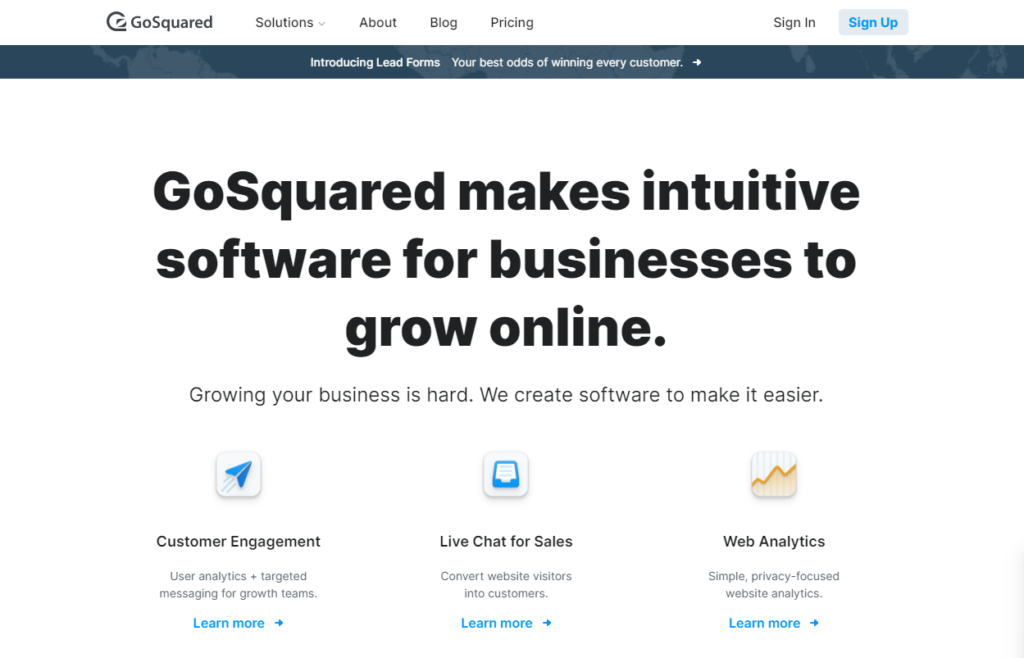
- Official website: https://www.gosquared.com/
- Fast and light live chat widget
- Great web analytics system
A great Intercom alternative, GoSquared is a platform that utilizes customer engagement through user analytics, targeted messaging, live chat for sales and converting a website visitor into a real customer, and web analytics that will help an online business reach its destination through growth.
Pros
- Flexible, affordable, pay-as-you need plans that you can upgrade whenever you want;
- Easy to use, very clean UI design, great interface;
- Live stats that give detailed info about your user’s and customer’s behavior on-site;
- The fastest and lightest live chat widget on the market;
- Marketing automation;
- Customer data hub.
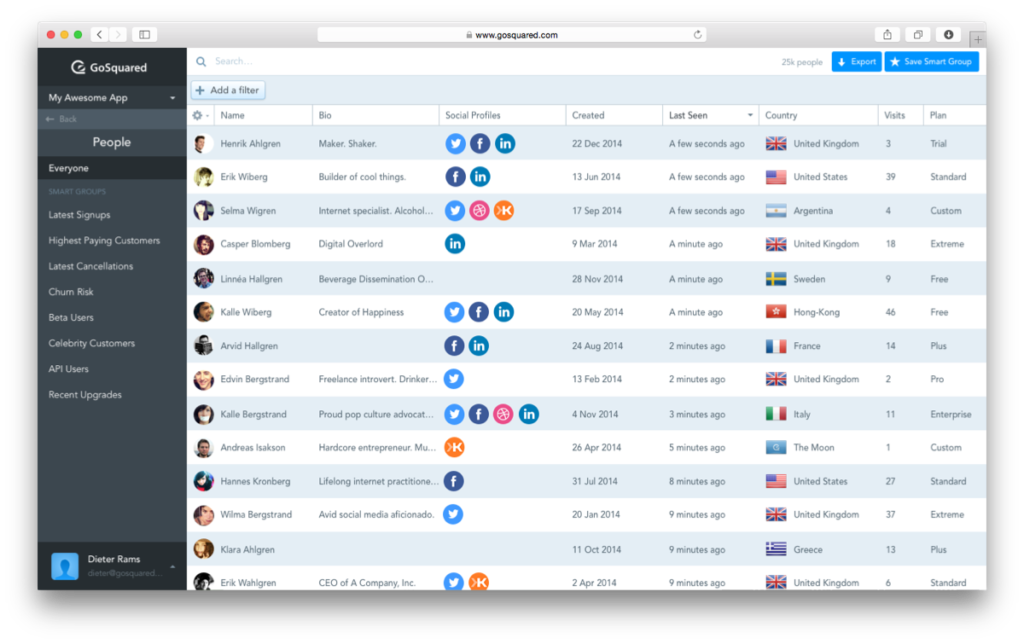
Cons
- The mobile app needs a bit of improvement (users report very small, mostly bug-related issues);
- Plans are somewhat pricier than other similar competitors.
Pricing and Plans
GoSquared’s pricing plans are divided into three different categories: customer engagement, web analytics, and live chat for sales. You can try each of these plans for free before you decide whether you want to get a paid subscription or not.
| GoSquared Plans | Pricing |
|---|---|
| Customer engagement | |
| Starter | $79 per month (for up to 1000 contacts*) |
| Standard | $129 per month (for up to 5000 contacts) |
| Pro | $179 per month (for up to 10.000 contacts) |
| Scale | Custom (more than 10.000 contacts) |
| Web analytics | |
| Starter | $9 per month (for up to 100.000 page views and 3 projects**) |
| Standard | $24 per month (for up to 500.000 page views and 5 projects) |
| Pro | $49 per month (for up to 1 million page views and 10 projects) |
| Scale | $99 per month (for up to 2.5 million page views and 20 projects) |
| Live chat for sales | |
| Starter | $29 per month (1 seat***) |
| Standard | $49 per month (3 seats) |
| Pro | $79 per month (5 seats) |
| Scale | $129 per month (10 seats) |
* Contacts are users who you choose to store in GoSquared’s Customer Data Hub.
** Projects are basically the number of websites you have and want to analyze individually.
*** Seats means any type of user who sends a message through live chat (such as a sales representative or a customer service agent)
GoSquared vs Intercom?
Users are especially keen on how thorough GoSquared’s reports are and how they use this knowledge to turn leads into customers.
GoSquared is a very intelligent and intuitive platform that can definitely transform your business for the better by using top-notch CRM, analytics, marketing automation, live chat technology, and more.
If you want powerful, easy-to-use, software that offers web analytics, customer engagement, and live chat, then GoSquared is something you should definitely try.
2. HelpCrunch

- Official website: https://helpcrunch.com/
- Affordable pricing
- Can be used on multiple websites
Referred to as the all-in-one customer communication service, HelpCrunch gives you all the basic stuff you need for your business, such as support, marketing, and sales at a highly affordable price, considering its value.
Pros
- Great dashboard – very easy to navigate the multiple elements such as data, analytics, and tabs;
- Option to localize messages and widgets depending on the country your website visitor comes from;
- Chatbot option (noted as ‘coming soon’ on their website);
- Easy setup;
- Customer support knowledge base software;
- Help desk software.
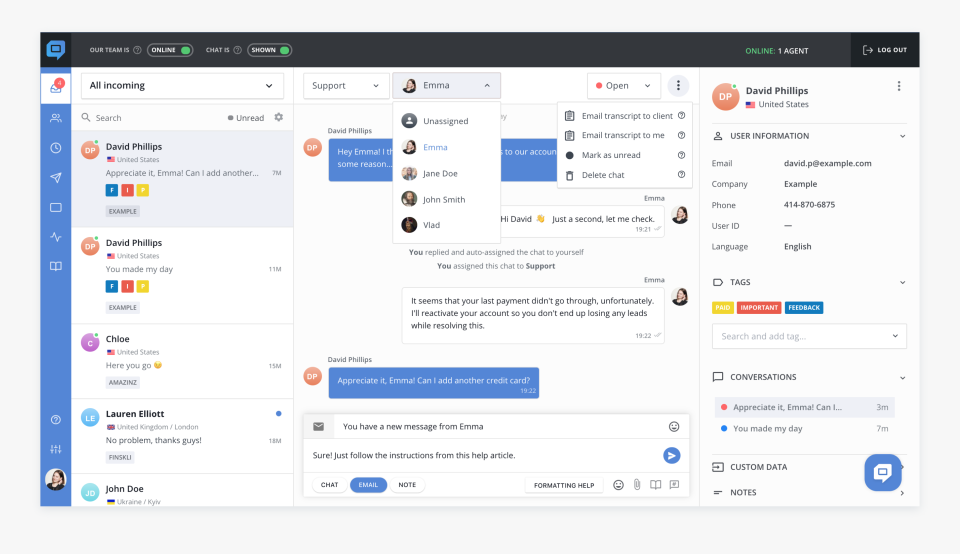
Cons
- Lacks Twitter and Instagram integration (Facebook is noted as ‘coming soon’ on their website);
- Lots of pricing options, which can get confusing at times.
Pricing and Plans
HelpCrunch has three basic pricing plans, which then branch out into different prices depending on team members and emails.
| HelpCrunch Plans | Pricing |
|---|---|
| Basic | $23 per month* for 1 team member/1,000 emails |
| Pro | $36 per month* for 1 team member/5,000 emails |
| Enterprise | Custom pricing for an unlimited number of team members and emails |
*Billed annually (there is also a slightly more expensive option for monthly billing.
You can find the full pricing plan on their website and calculate the best option according to your company’s needs.
HelpCrunch vs Intercom?
If you want a user-friendly, affordable, and all-encompassing tool for customer communication that has all the basic features you’ll need, then HelpCrunch is definitely the place to start.
3. Drift
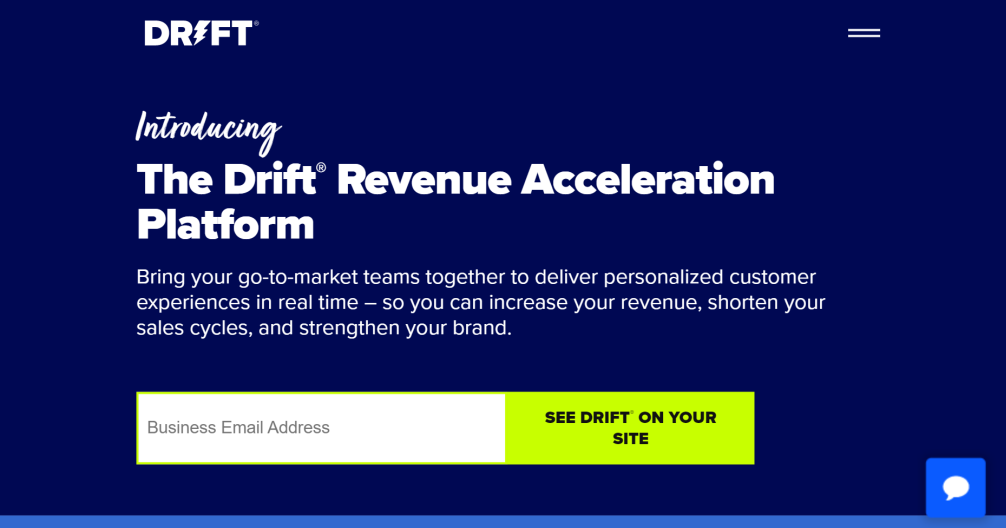
- Official website: https://www.drift.com/
- Marketing and sales-oriented communications platform
- Highly developed chatbots
Drift is a customer communications platform with a primary focus on sales and everything related to sales (revenue acceleration is one of their main selling points).
In that sense, it is a platform more similar to HubSpot. Still, Drift is another great Intercom alternative, especially if you want to further develop the marketing and sales departments.
Pros
- Lots of additional options for startups and small companies;
- The interface is really easy-to-use and work with;
- Very intuitive Playbook designs;
- Makes it easy to recognize accounts of high value and engage them with relevant and personalized content;
- Offers a free plan.
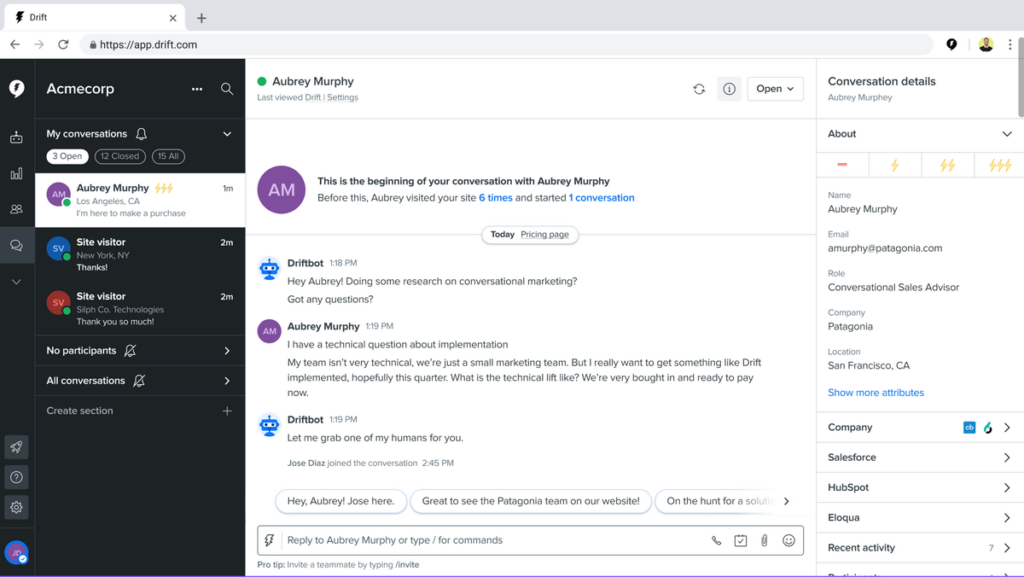
Cons
- Loading speed issues;
- Lacks autosave functionality;
- Pricing is higher than other competitors (but still cheaper than Intercom).
Plans and Pricing
Drift’s pricing plans depend on how big your company or online business is – how many employees it has and how many customers. Generally speaking, Drift offers four main pricing options:
- Free – This allows you to have real-time conversations with the visitors on your site. Also includes live chat, welcome message, email fallback, ability to block users, mobile app and desktop app, and basic reporting – and all of this without paying a dime!;
- Premium – best option if you have a small business – it includes all the stuff from the free plan plus a custom chatbot, basic lead routing, encryption in transit and at rest, the option to identify anonymous visitors and thus personalize their site experience (Drift intel), and access to Salesforce dashboards;
- Advanced – best for businesses of medium size that aim to generate a qualified and faster sales pipeline. You get all the stuff from Premium but also A/B testing, advanced lead routing, fastlane, ability to target specific audiences, role-based access control (RBAC), etc.;
- Enterprise – best for big and more complex enterprises who want scaled personalization and the best customer experience they can offer. You get everything from the Advanced plan plus support in multiple languages, dedicated workspaces, conversation analysis, and virtual selling assistants.
There’s also an additional option – if you’re a company of fewer than 50 employees, you can choose Drift for Early Stage Startups, and they will calculate a custom annual fee for you.
It will depend on the amount of annual funding your company gets, and the criteria range from less than $2 million and a maximum of $15 million in funding.
Intercom vs Drift?
Drift is a great idea for companies who really want to focus on the connection between customer communication, marketing, and sales.
It has various pricing plans that will correspond to your company’s needs and revenue, but it also offers a free plan for beginners.
4. Crisp
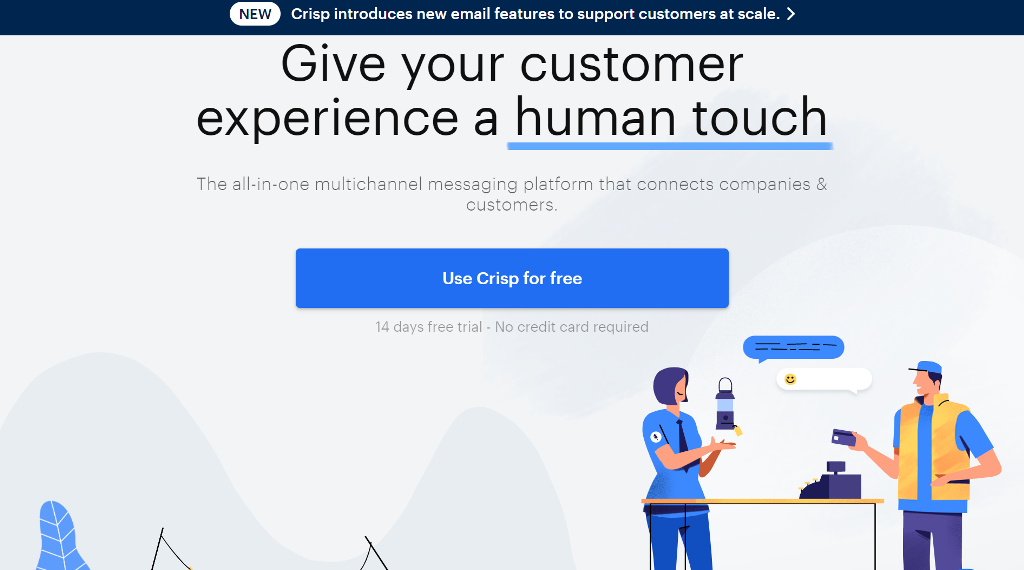
- Official website: https://crisp.chat/en/
- Competitive pricing
- Free plan option
Crisp is another solid all-in-one multichannel customer support and marketing platform. Rich in features and equipped with reasonable pricing plans, it’s definitely among the best support options out there.
Pros
- Live chat, chatbots, ticketing system, and knowledge base software;
- Live translate option that allows you to speak in the language of your customer, in real-time;
- Multiple integrations (Instagram, Facebook Messenger, Twitter DM, WordPress, Shopify, Slack, Hubspot, Salesforce, Zapier, and more).

Cons
- Some flaws with user-friendliness – can be a bit difficult to configure at times;
- Confusing documentation (needs to better separate chats and emails);
- Should work on their own customer support.
Pricing and Plans
Crip has three basic plans, and one of them is completely free! The other two (paid) plans also offer a 14-day free trial period. The billing is done on a monthly basis and you can cancel anytime.
| Crisp Plans | Pricing |
|---|---|
| Basic | Free |
| Pro | $25 per month, per website |
| Unlimited | $95 per month, per website |
The free plan is great for personal websites and is limited to two seats. The Pro plan is good for startups and it includes four seats. The Unlimited plan is made for bigger companies, which is why it includes an unlimited number of seats.
Crisp vs Intercom?
You should use Crisp if you want a simple, free, or affordable customer communications and marketing solution for your website, without having to compromise on features and functionality.
5. Zendesk
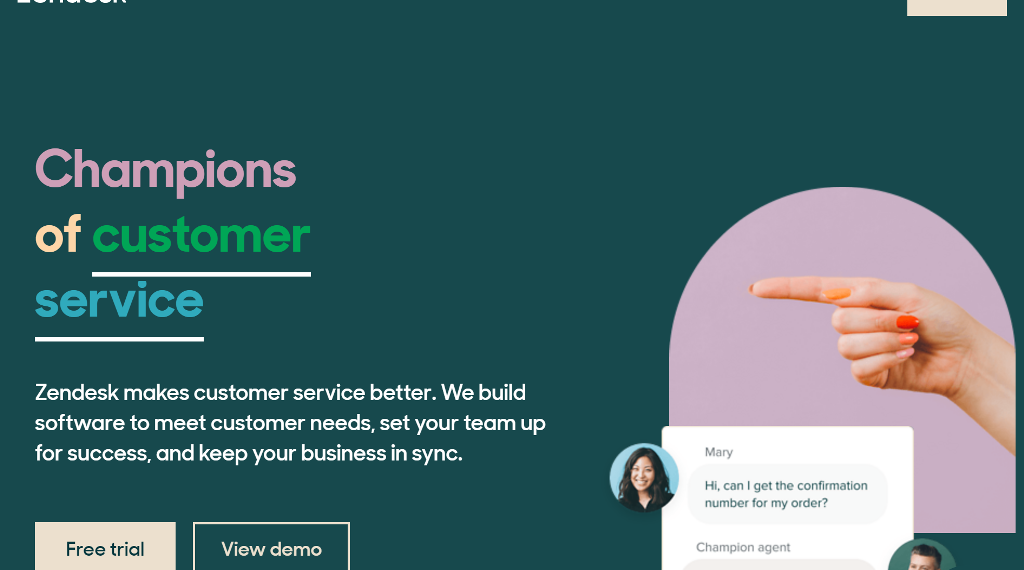
- Official website: https://www.zendesk.com/
- Ticket-based support system is their biggest asset
- Vast choice of language support
Zendesk is well-known cloud-based customer support and marketing platform that offers various tools for your online business such as a knowledge base, a customer service portal, and online communities. It’s highly customizable and offers lots of integrations such as Google Analytics and Salesforce.
Pros
- Easy-to-use customer support system (from the customers’ point of view);
- Well-developed ticket-based system;
- Customizable features that you can tailor to your site’s needs;
- Easy setup and follow-up instructions;
- Chat widget available.
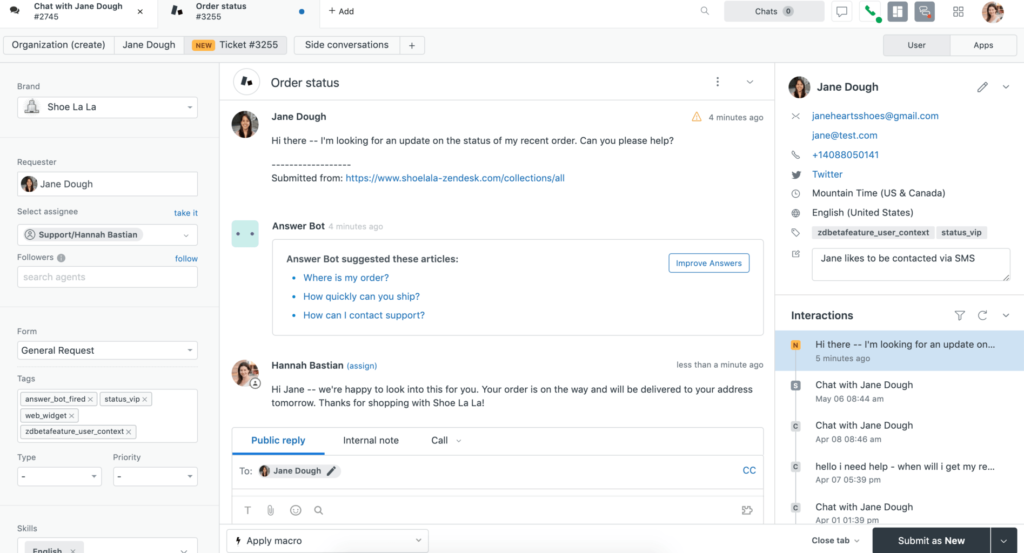
Cons
- Users complain that it’s a bit pricier than other similar competitors on the market;
- The settings page can be a tad overwhelming due to too many options.
Pricing and Plans
Zendesk has two different pricing plans depending on whether you want to use it more for customer support and customer communications (called Zendesk for Service), or for marketing and sales (called Zendesk for Sales).
The Zendesk for Service has several pricing options that you can see in the table below.
| Zendesk Plans | Pricing |
|---|---|
| Plans for growth | |
| Foundational Support | $19 per month, per agent* |
| Suite Team | $49 per month, per agent* |
| Suite Growth | $79 per month, per agent* |
| Suite Professional | $99 per month, per agent* |
| Plans for enterprises | |
| Suite Enterprise | $150 per month, per agent* |
| It gets even more powerful | Custom plans starting from $215 per month, per agent* |
* billed annually
The most basic plan offers essential support for email, Facebook, and Twitter. The other plans offer one of the best ticket systems out there, customer messaging supported by web, mobile devices, and social networks, different kinds of support (email, SMS, voice, and live chat), a help center, AI-powered automated answers, data and file storage, more than 1000 pre-built apps and integrations, robust APIs, customer support from Zendesk (online, email, and phone), and a lot more as the plans get pricier.
The other two enterprise-based plans offer a lot of customizable customer support options designed to adjust to your website and business needs.
Zendesk vs Intercom?
Zendesk is a trusted and popular platform that is used by giants such as Netflix, Uber, and Tesco, which means it’s definitely doing something right.
That being said, this shouldn’t intimidate you to sign up with them even if you have a smaller business but need solid, reliable, and high-quality support. I especially urge you to try it if you want to use the ticket system because they’re really pros at this.
Basically, no matter how big or how small your company is, you’ll find what you need at Zendesk.
What Is Intercom?
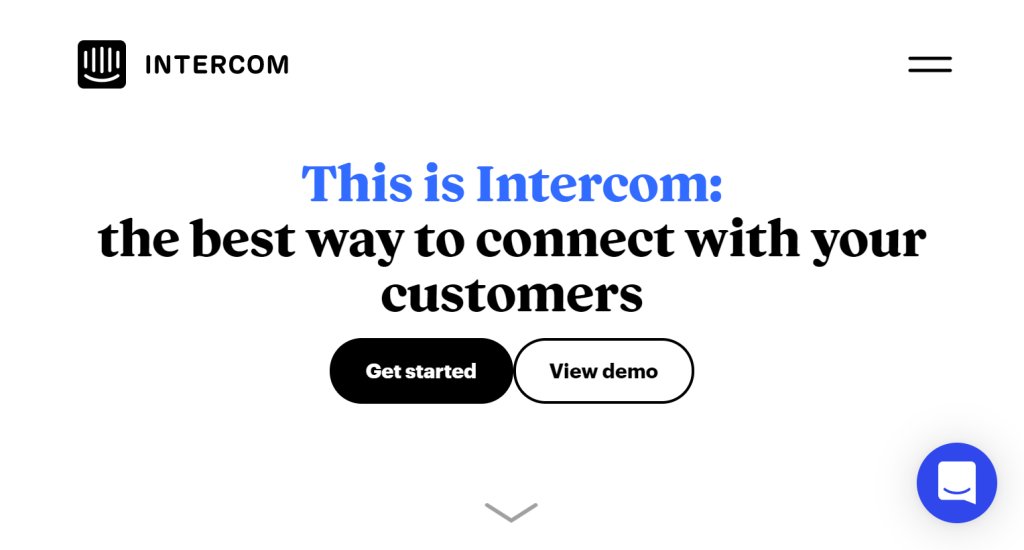
Simply put, Intercom is a platform that does all things connected with customer communications. It’s designed to help you easily communicate with your users and (potential) customers (i.e. prospects).
It shows you who’s using your site or your product, helps you to deliver targeted content to your users, and it designs messages specifically tailored to their behavior.
Intercom has existed for 10 years now, and it’s one of the best and most popular customer communications platforms on the planet. After all, the numbers don’t lie – it has about 100,000 monthly active users as well as 25,000 active paying customers!
Intercom Main Features
Basically, Intercom is designed to help your sales agents and customer service reps provide personalized experiences to every prospect that visits your online business site and engages with it.
In addition to the versatile features and top-notch software, Intercom also allows for scalable tools and payments.
Pros
- Great scalability across multiple types of customer communications – sales, marketing, engagement, support;
- Ability to target, contextualize, and personalize the interactions with your customers and visitors through the use of customer and behavioral data;
- Free developer workspaces;
- Lots of apps and integrations – more than 100 pre-built apps and integrations;
- Flexible API;
- Offers a very dynamic style of conversing and engaging with your customers;
- Lots of built-in features like mail marketing campaigns and push notifications;
- Product tours – Intercom’s product tours are a great tool if you want to make an onboarding flow for your users that’s simple and easy to follow.

Cons
- It’s expensive and the pricing system is helluva confusing – they should definitely work more on this issue, and even though they recently introduced some changes, it’s still not enough;
- Some users suggest that the CRM Salesforce integration should be more robust;
- Lacks a bit of overall flexibility.
Pricing and Plans
As was previously mentioned, Intercom’s pricing plans are rather confusing, and at times downright mysterious.
Why’s that? Well, for all of its three conversational plans (Support, Customer Engagement, and Marketing) Intercom offers custom ways to calculate the price for their services. It depends on two markers – seats and people reached.
“Seats” is a name for the type of access the employees at your company will have to different tools on the platform. Each of the team members that use Intercom’s features will need a minimum of one seat. So if they use both the support features and the marketing features, they will need two seats.
The “people reached’ refers to the number of individual people that you’ve reached in the past month through the Outbound messaging system. What this means is that you only need to pay for the customers who have received at least one Outbound message from your team in the last 30 days.
This is aimed at the majority of businesses on the market.
But Intercom also offers enterprise-grade services that include advanced permission, security, HIPAA support, and a lot more.
There is also an option for very small businesses, called Starter that starts at $67 per month (billed annually). It includes 1 seat (each additional seat costs $19 per month), and 1,000 people reached (you can pay $50 per month for each additional 1,000 people reached).
If you want more than 25 seats and more than 50,000 people reached, per month, then you will need to upgrade to a bigger plan. This option also comes with a free 14-day trial.
Best Intercom Alternatives 2025 – Summary
I haven’t exhausted all Intercom competitors in this article. Far from it. But this was meant to be a shorter list – I wanted to make it more specific and not too lengthy, giving you some of the crème de la crème – but at better prices.
You can easily find a less expensive solution for customer communications in high-quality alternatives that you might’ve overlooked so far, such as HelpCrunch, GoSquared, or Drift. Any one of them can make all the difference in your company’s customer interaction and growth plans.
References:
